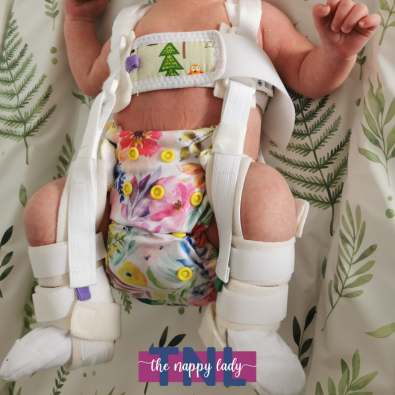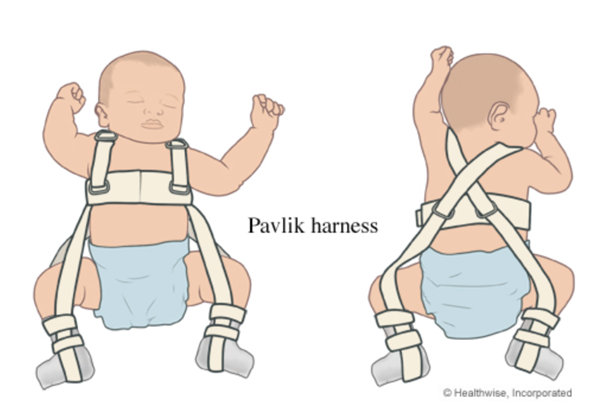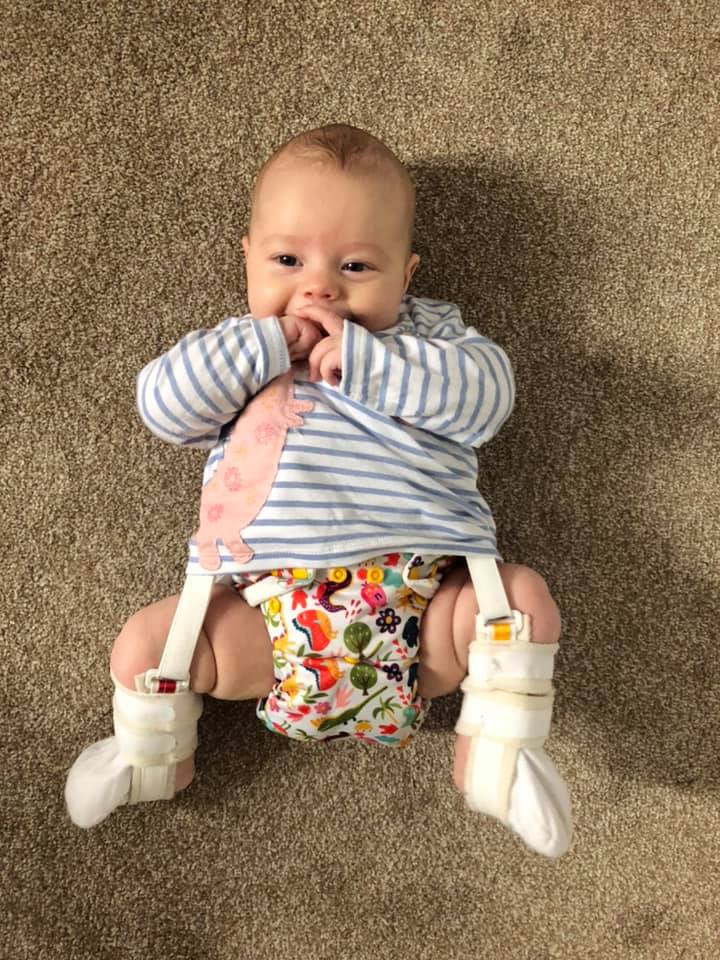Do Cloth Nappies Damage Your Baby's Hips?

We are grateful to Dr Kiran Rahim, MBBS. MRCPCH for providing this article. Find her at The Munching Medic.
Do Cloth Nappies Restrict Movement? Assessing Comfort and Development
Explore whether cloth nappies restrict movement and their impact on comfort and development. Read on to get informed and make the best choice for your baby.
A common myth that crops up time and time again is that cloth nappies (or cloth diapers for our overseas friends) cause developmental problems in babies. Some say reusable nappies delay gross motor milestones such as sitting, crawling or walking whilst others argue bulky nappies cause the hip joint to form abnormally (developmental dysplasia of Hip or DDH).
The good news is that there is absolutely no truth in either of these statements and current medical literature does not support either claim.
Developmental Milestones
Babies reach milestones in their own time. There are certain factors that encourage milestones like crawling and sitting, such as tummy time and nappy free time, but apart from this there is no evidence in the literature that reusable nappies delay milestones.
One study that is often cited compared walking in 13 month old and 19 month old white babies, and whether they stumbled or fell wearing disposables, cloth nappies or naked. Thirteen-month-olds fell or mis-stepped on 17% of trials while wearing the cloth nappy, 15% while wearing disposable nappies and 9% while walking naked. Nineteen-month-olds fell less frequently: M = 5% in cloth, 2% in disposable, and 2% while naked.
This 17% is often given as ‘proof' that bulky cloth nappies aren't good for baby milestones. This isn't proof of anything. These infants/toddlers were already walking and ALL of them reached their milestone at the age appropriate time (before 18months).
Parents have been using reusable nappies for hundreds of years without issue and there is no compelling evidence that cloth nappies are the culprit of any developmental milestone delays.
Hip Dysplasia
Hip dysplasia is a general term for hip instability, dislocation, or shallowness of the hip socket in babies and infants. The hip is a ball and socket joint where the head of the femur (or thigh bone) is the ball, and the ‘socket' is part of the pelvic bone. Normally the thigh bone is held tightly in place by ligaments, but in some babies these ligaments might be loose, causing the hip to dislocate or in some cases the ball and socket are completely dislocated.
These images from the International Hip Dysplasia Institute are helpful in demonstrating the degree of dysplasia possible at a hip joint.

Whilst we do not understand what causes hip dysplasia, certain factors increase the risk of your baby having it:
1. Family history – babies are more likely to have it if their parent did, and if a parent and child have it, then 1 in 3 babies will develop hip dysplasia.
2. Breech position in utero after 35 weeks.
3. Female Sex – girls are x5 more likely to have hip dysplasia than boys.
4. Cultural baby practices – cultures that practice hip safe swaddling and carrying have lower rates of dysplasia than those that do not. Hip safe carrying/swaddling has the hips in a bent and out position (much like cloth nappies).
When babies are born, unlike adults their bones are soft and mainly made of soft cartilage. As they grow, some babies can develop hip dysplasia which is why the condition is checked for at your newborn infant screen (NIPE) and again at the 6-8 week newborn baby check.
It is important you discuss your baby’s hips with your doctor/midwife/health visitor if baby has any of the risk factors above as well as any of the following signs:
1. Asymmetrical bum creases
2. ‘Clicky’ hip
3. Leg length discrepancy
If your baby has risk factors or an abnormal examination they will be referred for an Ultrasound plus x-rays if needed for confirmation.
Treatment for hip dysplasia is to hold the hip bone in the socket and allow it to develop ‘normally’. For babies under 6 months this is usually a Pavlik harness which allows the socket and ligament to become more stable.

Parents that use disposable nappies are often told to ‘double up' their disposable nappies when their child has risk factors or clicky hips. This creates extra ‘width' between the baby's legs and holds them in the optimal position for socket and ligament development for healthy hip development, much like cloth nappies do.
There is often a lot of misinformation around cloth nappies that isn't based on any scientific review or evidence. Anecdotally cloth nappy parents (sometimes called cloth bum mums and dads) will tell you that they have no issues with cloth. As a mother of three, my youngest is the only one to a cloth nappy: she rolled over at 4 months, sat aged 5 months and she is well on her way to crawling and standing up aided. In contrast, her disposable nappy-wearing brothers achieved these milestones well after the 6 month period. Both of these are fine and within the normal range of development for a baby.
Like adults, children do things in their own time and pace. Milestones are a guide for ‘neurotypical' development and are influenced by many many factors. Fortunately, cloth nappies aren't one of them. It is not unusual for some babies to meet some milestones early and others slightly later.
If you have concerns regarding your baby's development, the best person to speak to is your GP. They can either provide reassurance or refer you to paediatric services based on necessity.
Dr Kiran Rahim, MBBS. MRCPCH
The Munching Medic
References
Cole WG, Lingeman JM, Adolph KE. Go naked: diapers affect infant walking. Dev Sci. 2012;15(6):783-790. doi:10.1111/j.1467-7687.2012.01169.x
International Hip Dysplasia Institute.
One of my customers, Kirstie, has written about her experience with clicky hips.
"We had already decided our son would use cloth nappies before he arrived and we purchased a complete nappy system from Wendy during antenatal. He stared wearing them after the meconium had been passed out his system. In his fifth week he was diagnosed as having a 'clicky hip' and he required a Pavlik harness. We were reassured to learn from the paediatrician that the cloth nappies had been helping to keep his hips in a better position compared to the thinner disposable nappies.
At first it was tricky to weave the nappy's velcro fastenings through and underneath the harness straps, but after a couple of days we were changing nappies fairly expertly. We had a few leakages at first as the harness was keeping his legs wide open but as soon as his thighs bulked up the seal around the legs was tighter and no more accidents.
He is now four months old, and was only in the harness for 7 weeks. We are happy knowing that the cloth nappies are still augmenting his hip joints. We regularly receive positive comments about using cloth nappies, and we are really pleased that we made the decision to use them."
.jpeg)

Some happy customers in their harnesses and nappies.
